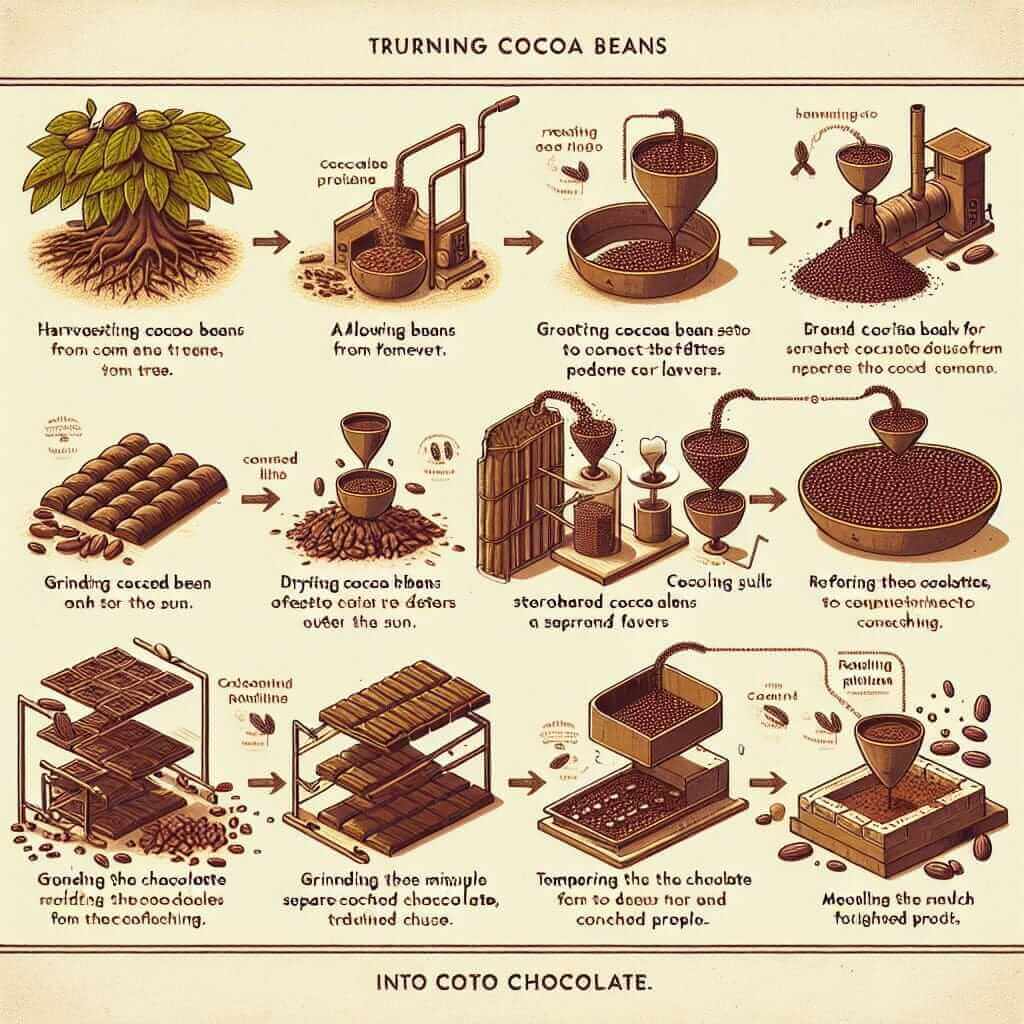Introduction
The IELTS Writing Task 1 requires you to demonstrate your ability to describe information presented visually. In the case of a process diagram, you’ll be tasked with explaining how something works or how something is made. Mastering this task is essential for achieving a high band score in your IELTS Writing exam.
This comprehensive guide will provide you with a clear understanding of the structure, language, and strategies needed to craft a high-scoring process writing task 1 answer.
Understanding IELTS Process Writing
A process diagram illustrates the stages of a process, often involving manufacturing, natural occurrences, or how something functions. Your task is to describe this process clearly and accurately using your own words.
Key Features of a Process Diagram:
- Visual Representation: The process is presented visually, often as a flowchart, diagram, or a series of pictures.
- Sequence of Stages: There’s a logical order to the process, with each stage leading to the next.
- Inputs and Outputs: The diagram usually shows the materials or information that go into the process (inputs) and the final product or outcome (outputs).
Steps to Writing a Band 9 Process Essay
1. Analyze the Diagram Carefully
Before you start writing, take a few moments to fully understand the process illustrated. Identify the:
- Main purpose of the process (e.g., to produce electricity, to manufacture bread).
- Key stages involved and their sequence.
- Inputs, outputs, and any transformations that occur during the process.
2. Structure Your Response Effectively
A well-structured response is crucial for coherence and clarity. Follow this structure:
Paragraph 1: Introduction (Paraphrase)
- Begin by paraphrasing the information given in the question prompt. Briefly state what the diagram illustrates.
Paragraph 2: Overview (Summarize Key Stages)
- Provide a general overview of the entire process, highlighting the main stages without going into detail.
- Identify any clear starting and ending points.
Paragraph 3 – 5: Detailed Description (Explain Each Stage)
- Describe each stage of the process in a logical order using clear and concise language.
- Use sequencing words and time connectors (e.g., firstly, next, subsequently, finally) to link the stages together smoothly.
- Focus on the most important details and avoid simply listing every single element of the diagram.
Note: The number of body paragraphs may vary depending on the complexity of the process, but aim for 2-3 paragraphs to provide sufficient detail.
3. Use Appropriate Language and Grammar
- Present Tense: Describe the process in the present tense as it is a continuous action.
- Passive Voice: The passive voice is often used in process descriptions, particularly when the focus is on the action rather than the agent (e.g., “The water is heated to 100 degrees Celsius”).
- Technical Vocabulary: Use specific vocabulary related to the process, but avoid using jargon that is too technical for the average reader to understand.
- Sequencing Words: Employ a variety of sequencing words to guide the reader through the process (e.g., initially, following this, simultaneously, ultimately).
4. Practice with Real IELTS Questions
The best way to prepare for the IELTS Writing Task 1 is to practice with past exam questions. This will familiarize you with the types of process diagrams you might encounter and allow you to refine your writing skills.
Example Process Essay
The diagram below shows the process of making chocolate.
(Insert Process Diagram Here)

Write a report for a university lecturer describing the process shown.
Sample Answer:
The diagram illustrates the process involved in the production of chocolate, from the initial harvesting of cocoa beans to the final product.
Overall, the process consists of several stages, beginning with the cultivation and harvesting of cocoa beans, followed by fermentation and drying. These beans are then processed further to extract cocoa butter and chocolate liquor, which are the key ingredients in chocolate production. Finally, the chocolate is molded and packaged for distribution.
Firstly, cocoa beans are harvested from cocoa pods grown on cacao trees. The pods are split open, and the beans are extracted and fermented for several days. This process enhances the flavor of the beans. Following fermentation, the beans are spread out in the sun to dry, reducing their moisture content.
Next, the dried beans are transported to a factory, where they are roasted at high temperatures. Roasting develops the characteristic chocolate flavor and aroma. After roasting, the beans are crushed and their outer shells are removed, leaving behind cocoa nibs. The nibs are then ground into a thick paste known as chocolate liquor.
Subsequently, the chocolate liquor is pressed to separate the cocoa butter from the cocoa solids. Sugar and other ingredients, such as milk powder, are then added to the cocoa butter and solids to create the desired chocolate flavor. The mixture is conched – a process of continuous stirring and heating – to refine the texture and flavor further. Finally, the liquid chocolate is tempered, molded into various shapes, and packaged for consumption.
Tips for Success:
- Manage Your Time: Allocate approximately 20 minutes for Task 1.
- Word Count: Aim for at least 150 words.
- Accuracy is Key: Ensure your description is accurate and reflects the diagram precisely.
- Proofread Carefully: Check for any grammatical errors or spelling mistakes.
Conclusion
By following these steps and practicing regularly, you can significantly improve your ability to write clear, concise, and high-scoring IELTS Process Writing Task 1 essays. Remember to analyze the diagram carefully, structure your response effectively, use appropriate language, and proofread meticulously. Good luck with your IELTS preparation!